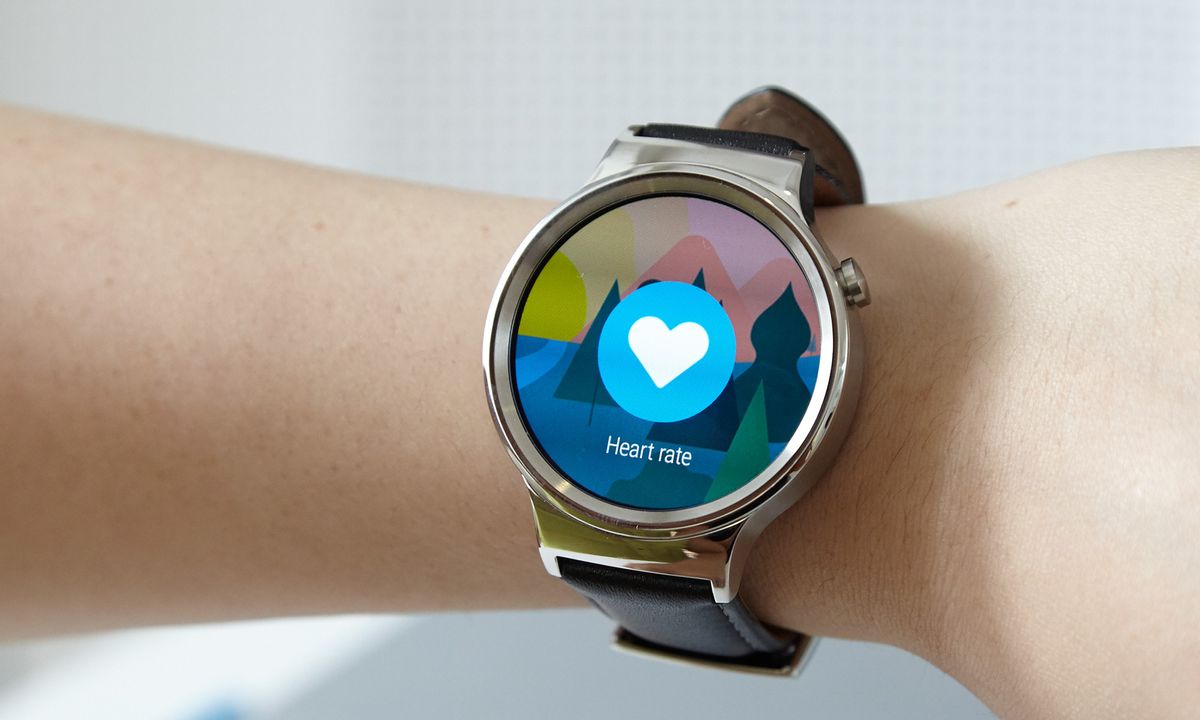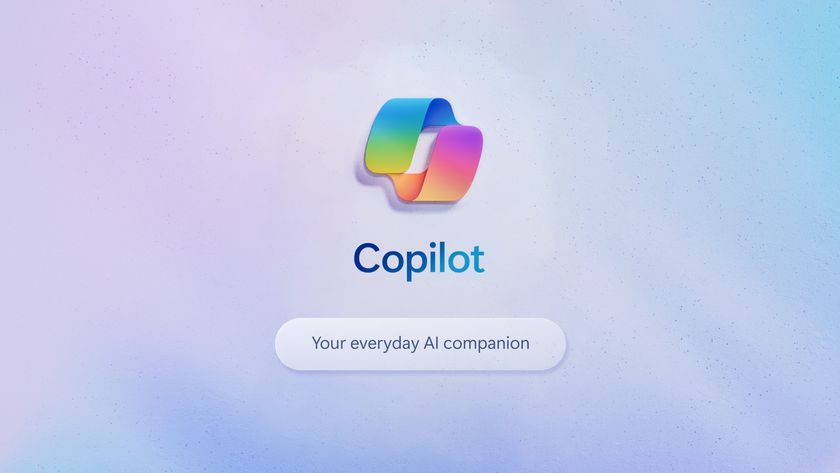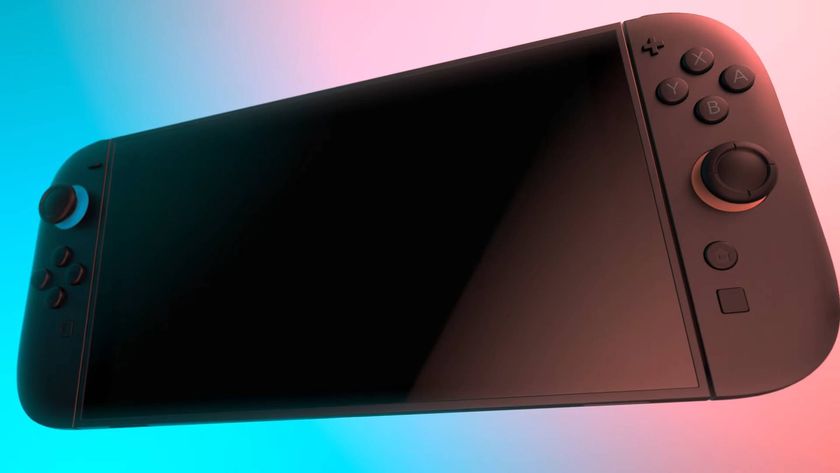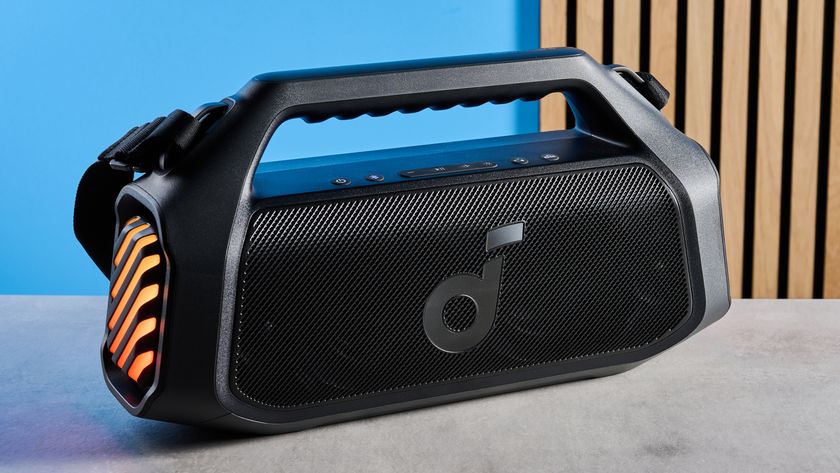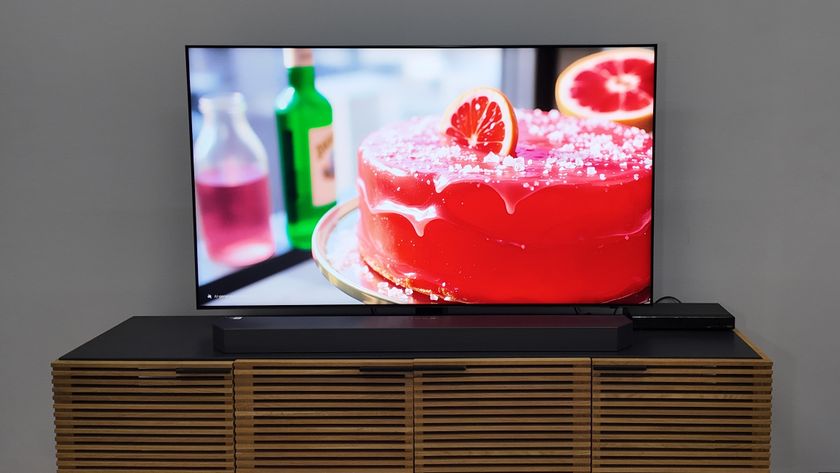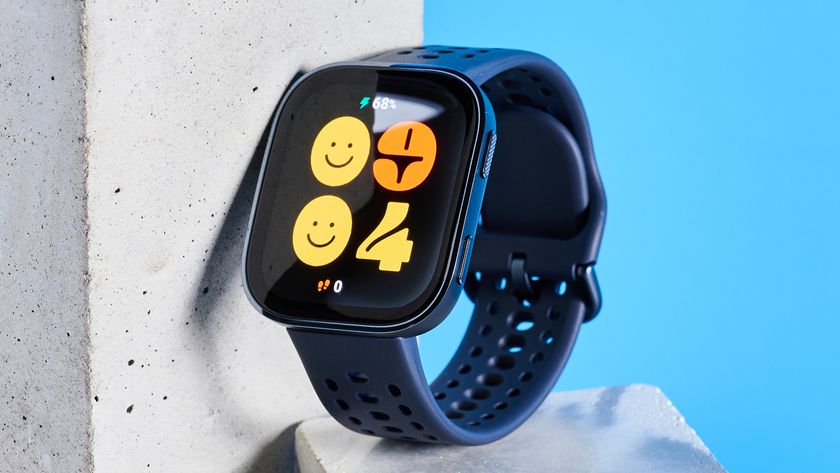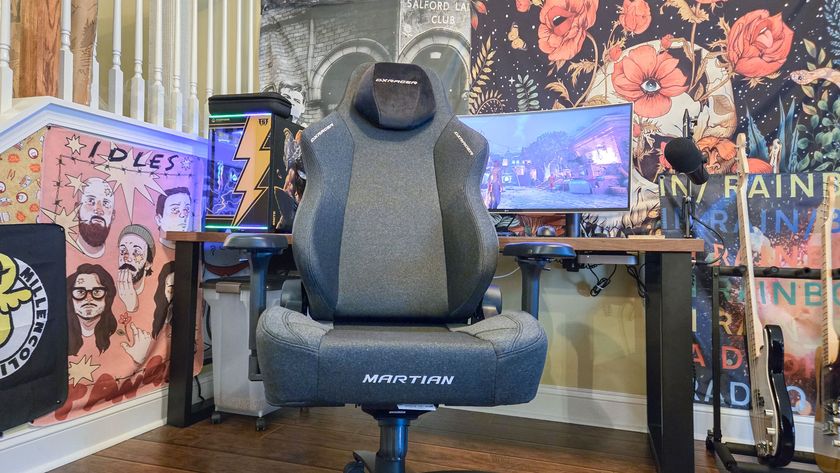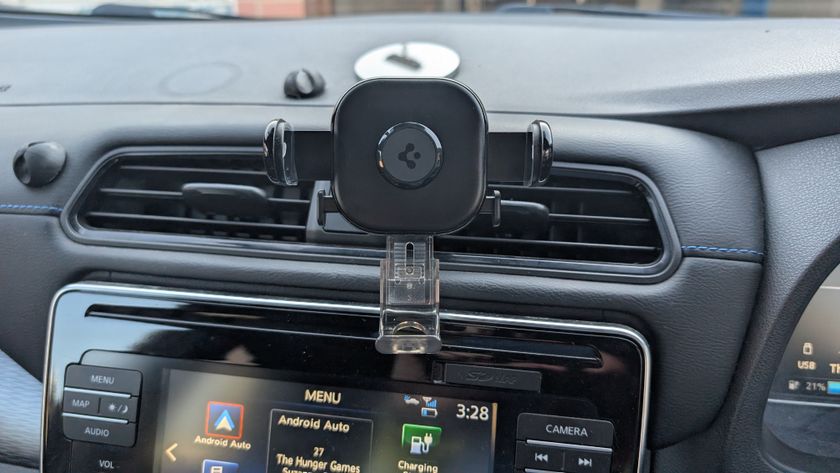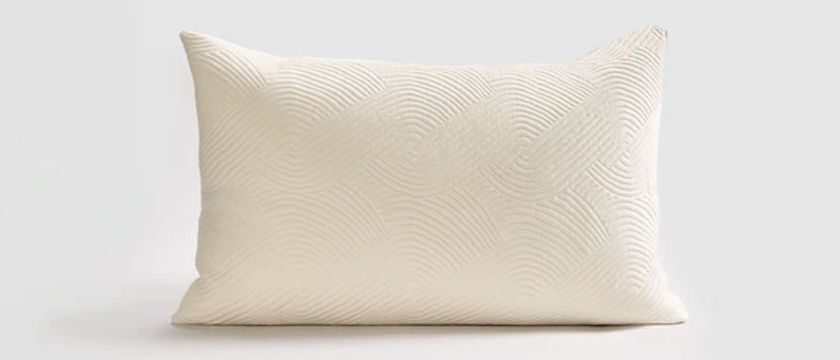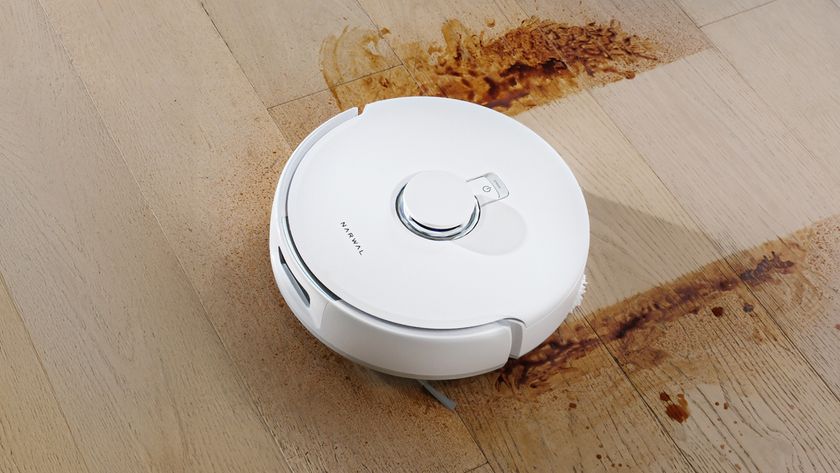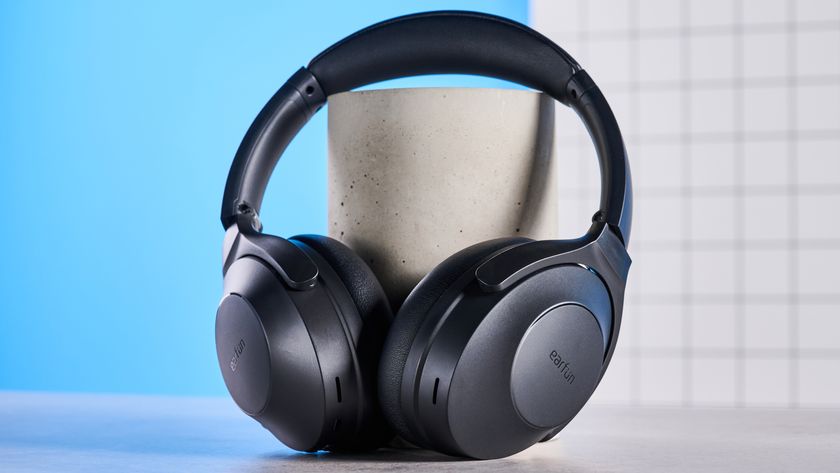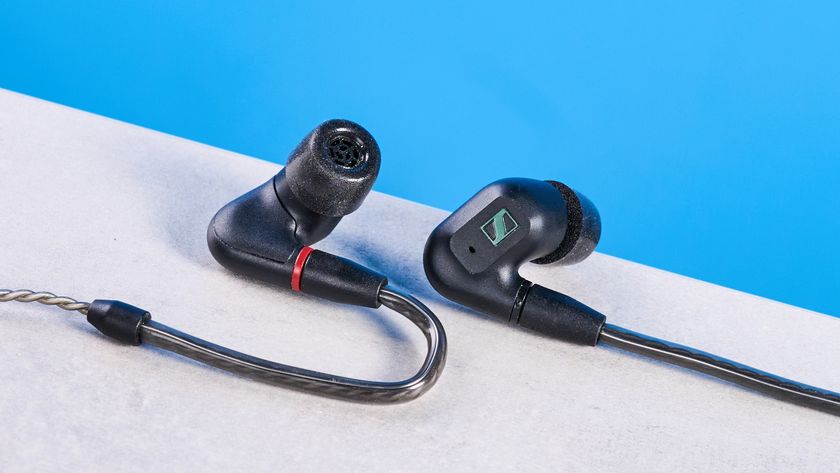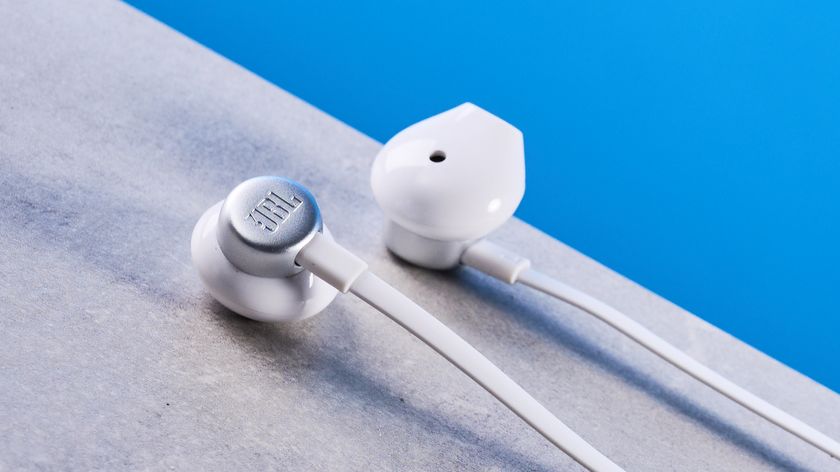Tom's Guide Verdict
With a bright, sharp display and smooth performance, the Huawei Watch is an elegant, albeit pricey, smartwatch.
Pros
- +
Handsome, classic looks
- +
Bright, sharp display
- +
Works with iOS
- +
Accurate heart-rate monitor.
Cons
- -
Expensive for Android Wear watch
- -
Limited app selection compared with Apple Watch.
Why you can trust Tom's Guide
It's not enough for a smartwatch simply to have many cool functions. It's got to look passable as a watch, too. The Huawei Watch blends form and function better than its chunky predecessors, and looks like a classy, traditional watch that you'd see on a CEO of a Fortune 500 company. Starting at $349, this Android Wear smartwatch comes in plenty of mouthwatering designs and also offers a sharp display, long battery life and a heart-rate sensor. Plus, you can pair it with an iPhone, although you're limited in what you can do.
Design
With a black leather band and shiny stainless-steel face, the Huawei Watch looks every bit like a traditional watch. The wearable's classic good looks were met with admiring oohs and ahs from my friends, especially when its face was on, as they were surprised that it was a smartwatch.
The Huawei's round 1.4-inch touch screen is larger than the Moto 360 2nd generation (1.37 inches), the 1.3-inch LG Watch Urbane and the 1.3-inch Apple Watch displays, but smaller than the upcoming Pebble Time Round (1.5 inches). Apple's device has a rectangular screen, which isn't as appealing to many fashion-forward shoppers.
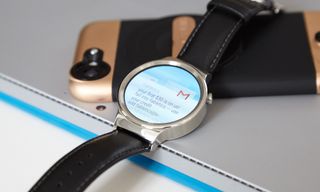
I like its dainty face, but the Huawei Watch's 0.44-inch tall case is chunkier than I'd like. A knob on the right side of the display lets you power the device on or off, and a heart-rate reader sits on the underside. The smartwatch is water-resistant, so it's safe to wear in the rain or when you're washing your hands. But Huawei cautions against using it when washing cars, swimming, diving or in the shower.
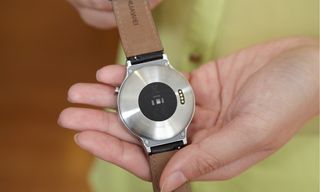
Weighing 2.13 ounces, the Huawei Watch is heavier than the 1.76-ounce Apple Watch (polished stainless-steel case in 42mm size) and the feather-light Pebble Time Round (0.9 ounces), but lighter than the hefty 3.28-ounce Moto 360 (2nd gen) and the LG Watch Urbane (2.3 ounces).
Display
I loved the Huawei Watch's bright, round, 1.4-inch 400 x 400 AMOLED display. It was easy to read anything from notifications to weather forecasts on the watch face from every angle. In fact, the screen was even too bright at times, becoming a big distraction in a darkened theater where I watched The Intern. Thankfully, you can turn on Theater mode to turn off the screen until you press the power button.
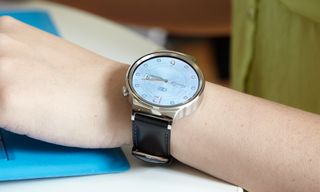
Huawei has created one of the sharpest smartwatch screens around, making photo wallpapers and images of my contacts look crisp. Its 400 x 400 resolution handily beats the Apple Watch (272 x 340), the new Moto 360 (360 x 330) and the LG Watch Urbane (320 x 320). The Pebble Time Round has a less vivid e-paper display and a mere 180 x 180 pixels.
The watch dims after a few seconds of inactivity, and when you have Always-On mode activated, it will show the time in a dimmed state, which is still easy to see in sunlight. After 30 minutes of inactivity, though, it will still go to sleep even if you don't want it to ─ a new requirement of Google's operating system. In theory, all it takes to wake the screen is lifting the watch and turning your wrist. However, this sometimes took multiple attempts to turn it on. It was also a bit too sensitive, turning the screen on when I moved my arm from side to side. Forget about discreetly side-glancing at your watch to check the time during a boring meeting or a blind date gone wrong.
Android Wear
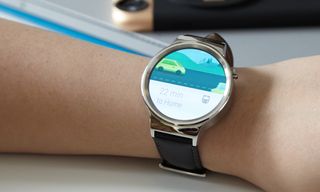
Powered by a 1.2-GHz Snapdragon 400 CPU with 4GB of storage and 512MB of RAM, the Huawei Watch delivered a smooth Android Wear 5.1.1 experience.
The updated OS software now supports gesture navigation, letting you flick your wrist to scroll through your notifications, Wi-Fi connectivity and emoji replies to messages. It doesn't take too much of a flick to activate a scroll, but the watch takes about a second to respond. I found swiping the watch face a much easier way to navigate through alerts.
The Wi-Fi capability is the most appealing to me, because it frees you from having to be tethered to your phone to get notifications on your watch, including things like text messages.
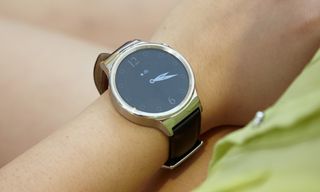
Android Wear's main screen is a clock face, and alerts are shown on cards stacked on top of each other, so you have to keep swiping (or flicking) down to see all your messages. Dozens of watch faces are available, and more are coming since Google opened up the watch face API last year. Swiping left from the home face lets your access apps, including Settings, and one more swipe left brings up Ok Google for voice commands.
MORE: Best Android Wear Smartwatch Apps
Apps on Android Wear number in the thousands, and are simple to use. It was ridiculously easy to summon a Lyft ride from my wrist; the app started setting up a ride from where I was once I tapped the Lyft icon. The app placed me a couple blocks away from where I was, but it was easy enough to change the pickup point. Other solid Android Wear apps include Wunderlist for keeping track of your to-do list, and Pinterest.
The Apple Watch and Pebble have 10,000 and more than 8,000 apps, respectively, many from big companies such as ESPN, Yelp, the New York Times and Instagram. Some of these titles, such as Yelp and Instagram, are available on Wear because of third-party offerings, but aren't officially optimized.
Notifications
Each time a notification comes in, the watch vibrates briefly, and you can lift your wrist to read the message. On each card, you can drag to the left to respond or dismiss it, or open the app on your phone.
I liked getting buzzed on my wrist whenever a new alert came in, and I could decide from which apps to allow notifications. I can block alerts from specific apps and keep alerts on for others. It was much easier to go about getting ready for work, knowing that the watch would ping me when my Lyft ride was arriving. In the evening, relaxing on the couch is much more comfortable when all I had to do was lift my arm to see who was looking for me, and quickly reply from my wrist.
Android Wear supports notifications from several apps, including Facebook, Twitter, WhatsApp, Instagram, Tinder and its own Gmail and Hangouts.
iOS Compatibility
One of the first Android Wear watches to work with iOS, the Huawei Watch is great news for iPhone owners everywhere who are more heavily reliant on Google services.
When paired with an iPhone, the Huawei Watch delivers notifications for incoming calls and messages, as well as from apps such as Hangouts, Gmail and Facebook. You can block specific apps from sending notifications to the watch.
However, you'll get limited functions when synced with iPhones compared with Android devices. You won't be able to compose voice replies to messages (although you can dictate email replies via Gmail), nor can you get Ok Google to send a message to a contact. Instead, you'll only get options to dismiss a notification or block an app for most alerts, making the watch much less useful when linked to iPhones.
The iOS version of the Android Wear app doesn't let you see compatible watch apps or take a screenshot, both of which you can do on the Android version of the app.
The LG Watch Urbane, Moto 360 (2nd gen) and Pebble Time Round also work with both Android and iOS devices, while the Apple Watch only serves iOS users. Pairing with iOS will be available on all new Android Wear watches moving forward.
MORE: Android Wear and iPhones: What Works, What Doesn't
Fitness Tracking and Heart Rate Monitor
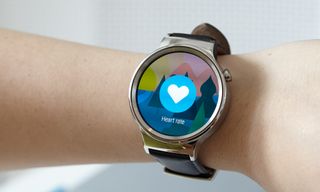
Fitness buffs will appreciate the heart-rate monitor on the Huawei Watch's underside, which measures your pulse and sends that info to Google Fit (or an app you specify, such as MapMyFitness' Map My Run). The watch's reader was accurate, showing my heart rate as 111 beats per minute after a few minutes of brisk walking, very close to the 109 bpm to 111 bpm measured by a treadmill's sensors.
Through the watch, Google Fit also tracks your steps, distance traveled and calories burned. I was pleasantly surprised to see alerts congratulating me on meeting my 5,000-step goal on both days of a weekend trip to Pennsylvania. Even better, Google Fit told me when I had broken my previous records, giving me minor bragging rights for a while.
The Apple Watch does a better job of motivating you, however, as it reminds you to stand up every hour and rewards you with achievement medals for meeting goals.
Battery Life
The wearable's 300-mAh battery is supposed to last up to two days, and on my first charge, it met that target. Subsequently, the watch clocked about a day to a day and a half of use before conking out. I had the device charging overnight and put it on at about 12:30 p.m.
After a day during which I received a handful of alerts and checked the watch many times, I was getting alerts at 11 p.m. that my battery was low (at 12 percent). The Watch still held out till 1:30 p.m the next day, dying after I tried to start a handful of apps.
Price and Configurations
Our unit of the Huawei Watch is the $349 base model that comes with a stainless-steel face and black leather strap. Huawei also offers bands made of stainless-steel mesh and link for $50 more, and a black stainless-steel face with a black stainless-steel link band costs $449.
At the top of the price range are Huawei's rose gold stainless-steel faces that cost $699 with a brown leather strap, or $799 with a rose gold-plated stainless-steel link band.
A series of 18mm bands are available from $80 to $170.
Bottom Line
The Huawei watch looks and feels like an elegant, traditional timepiece, and the improved Android Wear makes it easier to use than older smartwatches. Its brilliant display is easy to read anywhere, and its battery lasts long enough that you don't have to be shackled to an outlet.
At a starting price of $350, however, the Huawei Watch costs the same as an Apple Watch, which does more with iOS devices. Other Android wearables, such as the $299 Moto 360 (2nd gen) and the $273 LG Watch Urbane are cheaper, and have Wi-Fi and iOS compatibility, too, but have less-sharp displays. Pebble may have a winner in the Time Round, which has alluring looks and a more-developed app ecosystem for $100 less.
If you're willing to live with Android Wear's limitations and you place a premium on design, the Huawei Watch is a very good option.
Cherlynn is Deputy Editor, Reviews at Engadget and also leads the site's Google reporting. She graduated with a Master’s in Journalism from Columbia University before joining Tom's Guide and its sister site LaptopMag as a staff writer, where she covered wearables, cameras, laptops, computers and smartphones, among many other subjects.
